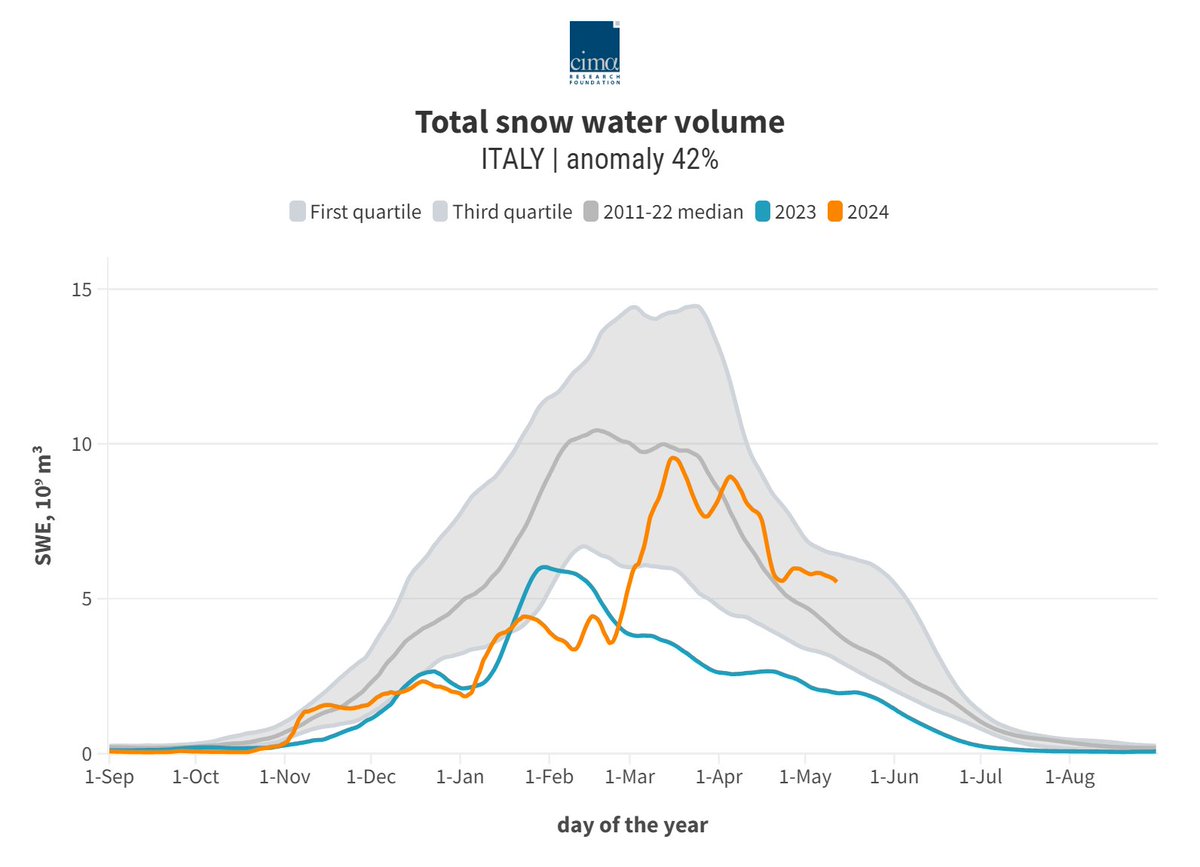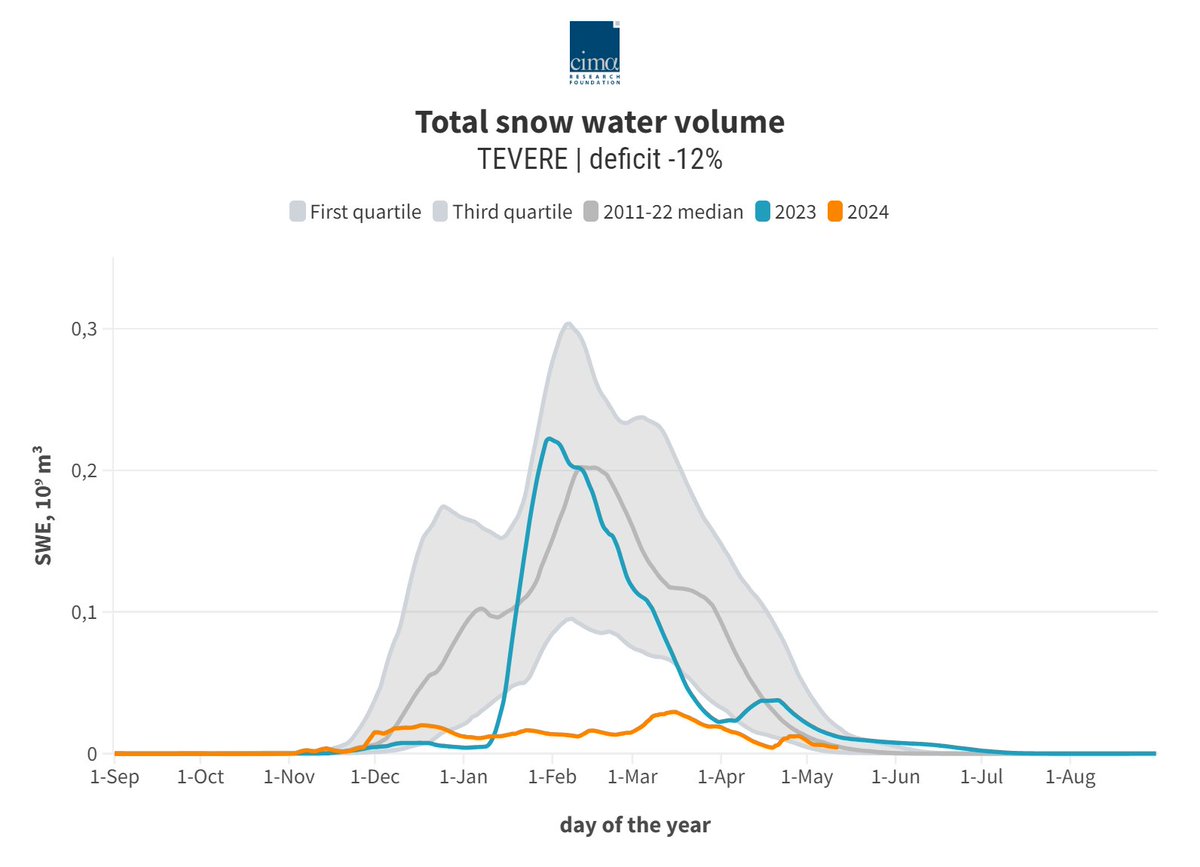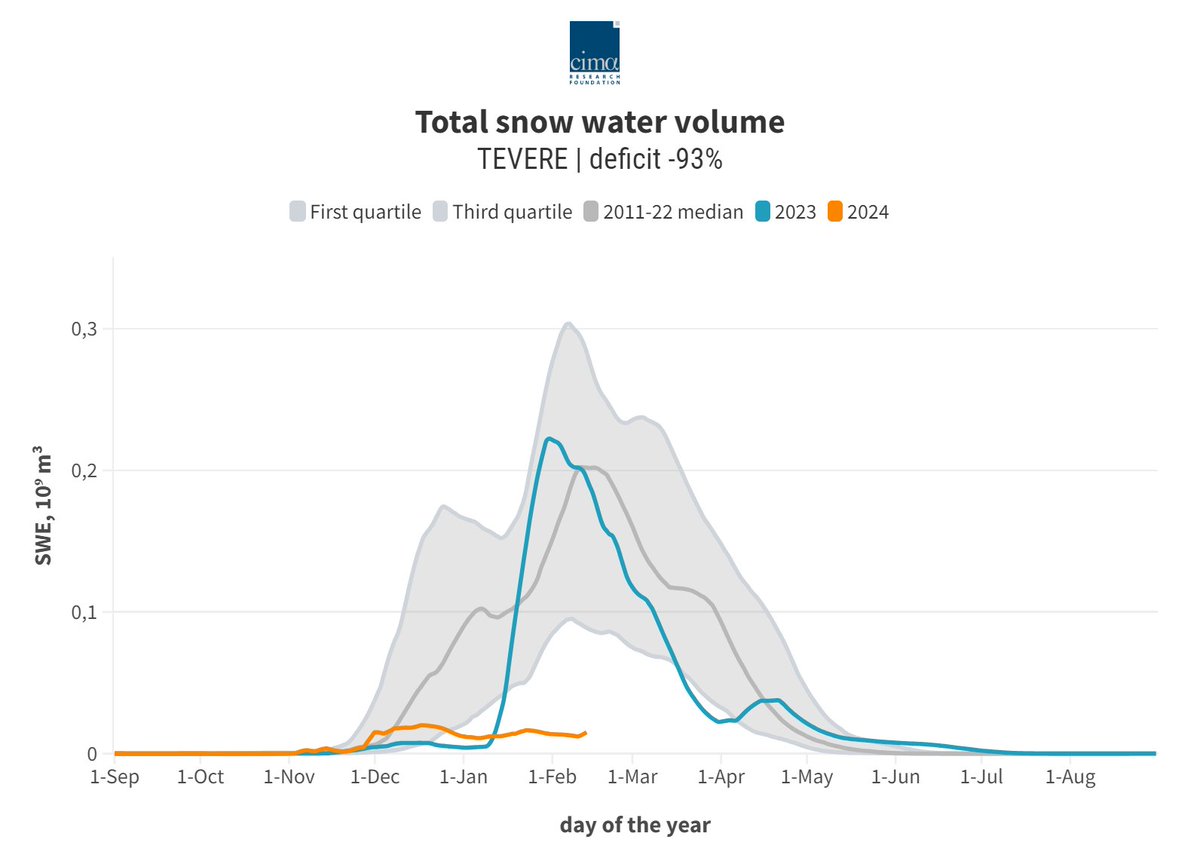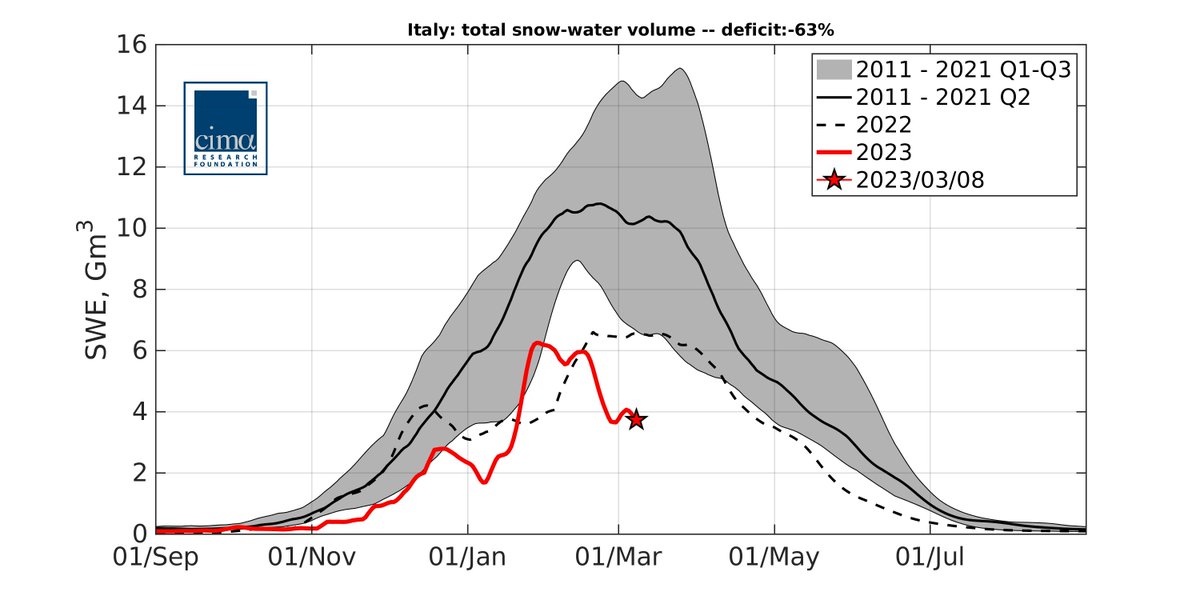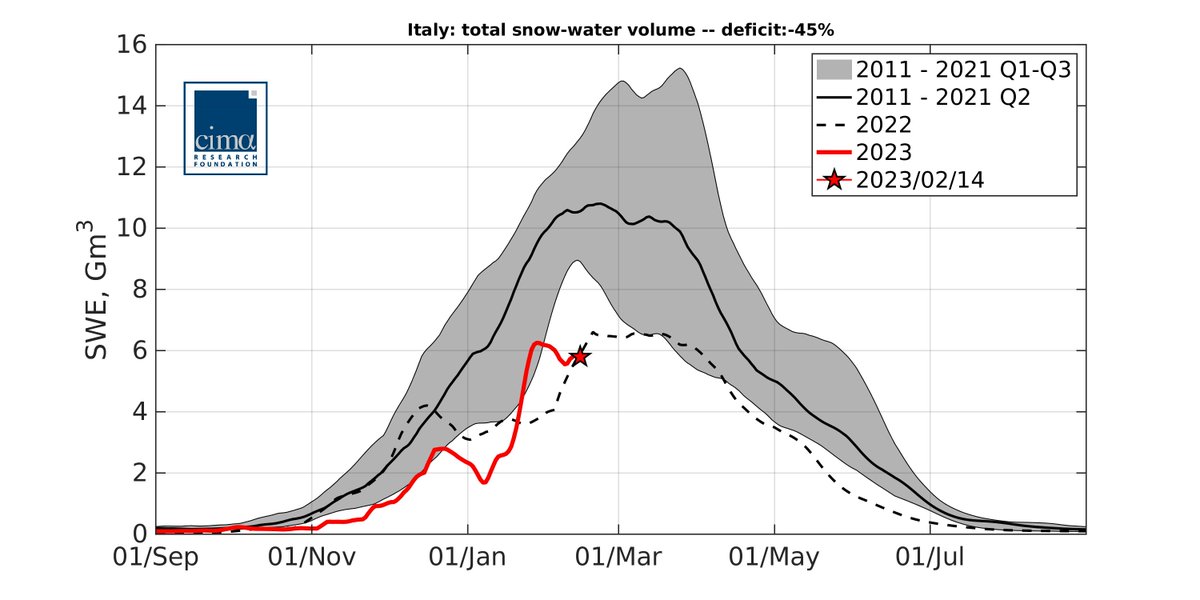After some cold weather at the end of February, how is the deficit in #snow water resources doing across #Italy? Snowfalls did not change much, as we still estimate a total deficit of -63% 👇 This means we have about 1/3 of recent-year snow for this date. @DPCgov
A thread 🧵👇
A thread 🧵👇

👆 Did you notice that?
We were in a much better spot at the end of January.
What has happened since then?
Well, we experienced a significant warm spell in February, which depleted about 1/3 of snow water resources.
We learned this: warm temperatures = less snow…
We were in a much better spot at the end of January.
What has happened since then?
Well, we experienced a significant warm spell in February, which depleted about 1/3 of snow water resources.
We learned this: warm temperatures = less snow…
It is not only the Italian #Alps that are experiencing a significant, profound deficit. Most of the #Apennines are back to the deficit zone after a snowy January. Again, such high temperatures can only lead to faster than usual snowmelt and very short accumulation. 

The #Po river basin hosts 50% of Italian snow water resources, providing freshwater to various economic sectors and ecosystems. Unfortunately, there the deficit is larger than the national picture: -66%. The situation is similar to 2022, an already dry and warm year. 
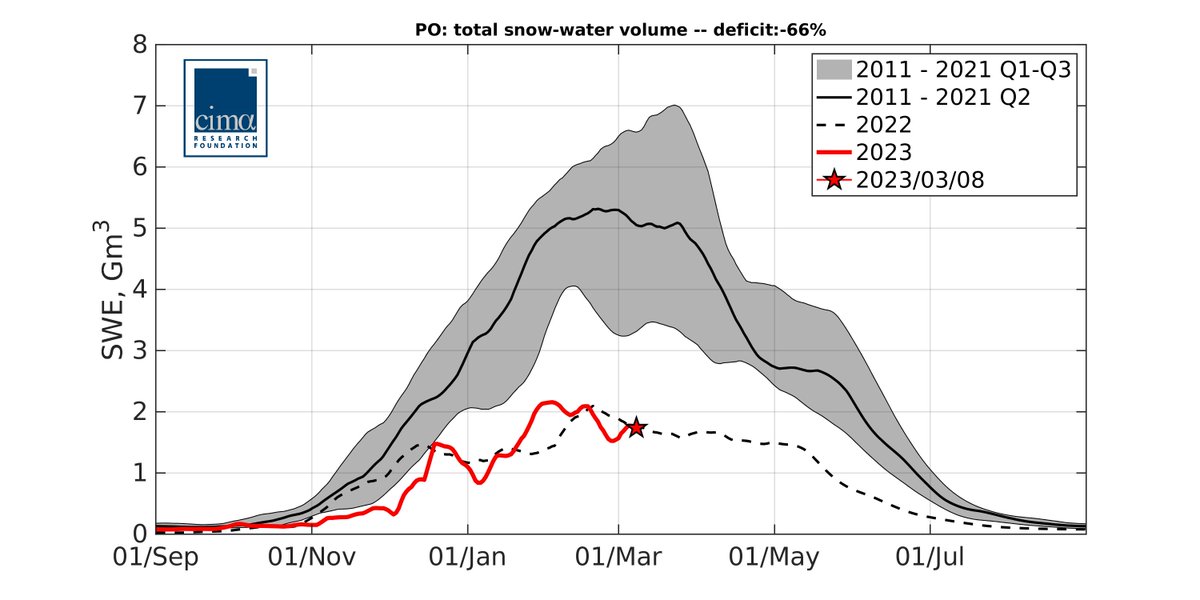
Look at how 2023 #snow compares to last year! 👇 While the south-western Italian #Alps have recently enjoyed deeper snowpacks than last year, the north-eastern and eastern Italian Alps have less snow – especially at low elevations. It is a systemic #deficit across the Alps. 

Indeed, the other large contributor to our national #water resources – the #Adige river – is also experiencing a profound deficit: -73%.
Do you see how snow water resources started declining in mid February?
That’s the effect of winter warm temp at play in front of us…
Do you see how snow water resources started declining in mid February?
That’s the effect of winter warm temp at play in front of us…
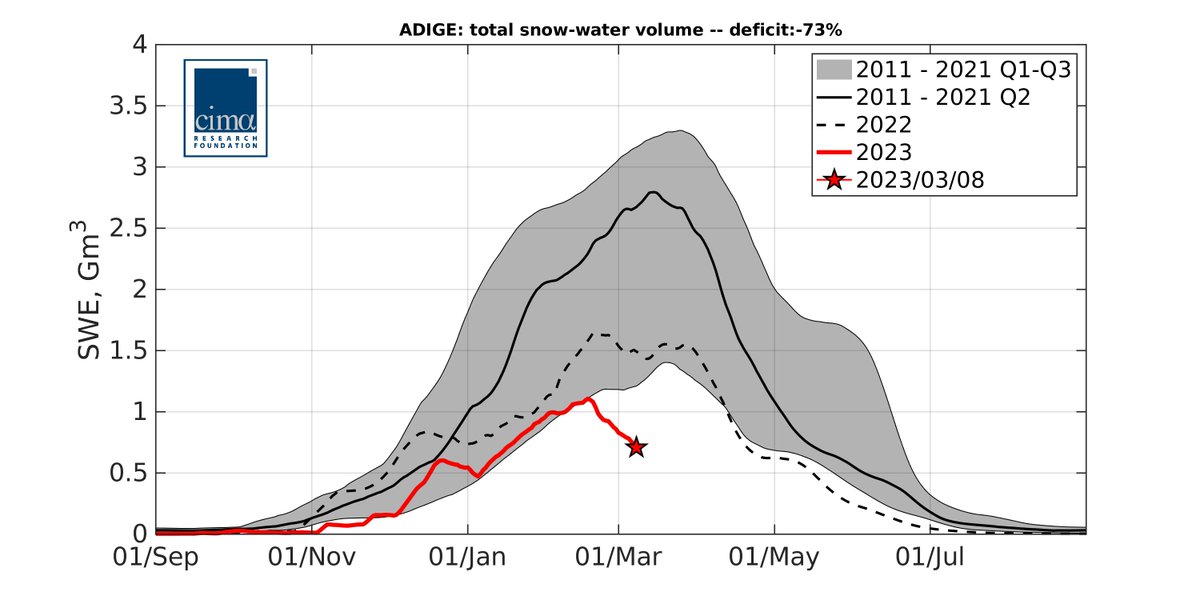
With most of the snow season behind us, it is about time to focus on the implications. What have we learned from previous snow deficits?
First, that low snow water resources often lead to a decline in hydro production at Alpine scale 👇 (hydro data by @TernaSpA).
First, that low snow water resources often lead to a decline in hydro production at Alpine scale 👇 (hydro data by @TernaSpA).

Second, a warm-dry year like 2022 saw 50% less snow, but +40% more irrigation water requirements 👇 It is a “perfect storm” for our mountains, which provide less snowmelt when we would need more water than usual.
Estimates from Aosta valley, collab with @ArpaValledAosta.
Estimates from Aosta valley, collab with @ArpaValledAosta.

To recap: today’s lack of #snow will likely be tomorrow’s lack of #water. March 4 generally sees peak-snow accumulation in IT, so we likely passed the period with the largest amount of snow.
We will post again in early April, during the snowmelt season! bit.ly/3L8WhOZ
We will post again in early April, during the snowmelt season! bit.ly/3L8WhOZ
These data come from S3M Italy, a real-time operational tool we developed for the Italian @DPCgov also to estimate snow water resources using models, satellite data and ground measurements.
We simulated since 2010 & data are freely available here: zenodo.org/record/7034956…
We simulated since 2010 & data are freely available here: zenodo.org/record/7034956…

• • •
Missing some Tweet in this thread? You can try to
force a refresh


